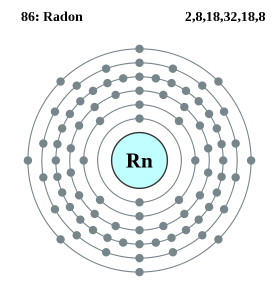Radon exposure and tobacco smoke together significantly increase the risk of lung cancer. As Dr. Ellen Hahn says, professor at the University of Kentucky’s colleges of nursing and health, the deadly combination is the “triple crown of lung cancer.”
 Lung cancer is one of the most deadly forms of the disease, it actually has the highest mortality rate. When you stop for a moment and consider why lung cancer would be so fatal It makes sense. After all, there are a few organs the body could never function without and the lungs are one of them.
Lung cancer is one of the most deadly forms of the disease, it actually has the highest mortality rate. When you stop for a moment and consider why lung cancer would be so fatal It makes sense. After all, there are a few organs the body could never function without and the lungs are one of them.
The bigger problem is that most people know and understand about the correlation between tobacco smoke and lung cancer. Few are aware that exposure to radon can cause lung cancer even in non-smokers, and that it heightens the risk in smokers.
There is no hiding from it, however. Radon exposure is the second leading cause of lung cancer in the United States, right behind smoking. Believe it or not, second-hand smoke is the third leading cause, meaning radon exposure is much more dangerous and prominent.
Dr. Hahn is conducting a study which she hopes will boost awareness about radon exposure and tobacco smoke. The overall plan is to reduce the combination of radon exposure and smoking in homes. She also wants to discuss mitigation, and smoking plans – encouraging others to smoke outside instead of in – with those surveyed.
Dr. Hahn has made it clear that legislators need to address the problem, and that more laws should be put in place to prevent radon exposure.
“The radon laws nationally are pretty weak. There are some states that lead the pack, like Illinois, because people have advocated for laws there. But I think it’s just a matter of the policy keeping up with the science. It’s not until relatively recently that the science of radon risk has been indisputable. But we know now that it’s a leading cause of lung cancer and we need to disseminate that information.”
Dr. Hahn suggests that federal tax incentives might push homeowners and parties to reduce the risk of radon exposure in their homes.
What’s really sad is that lung cancer – in relation to radon exposure – can be prevented easily through mitigation. Setting up a reduction system in any home is not expensive, especially when you consider the health benefits. As an estimate it will likely run homeowners anywhere from $500 – $2,500 depending on the system installed.
As Dr. Hahn says, “there’s so much you can do to prevent lung cancer, but with radon, you can’t fix it if you don’t know you have a problem.”
If you’d like to read more about Dr. Hahn’s study you can visit the University of Kentucky research page.
Since radon induced lung cancer kills over 20,000 Americans each year, we highly recommend reading more about the dangers associated with it by exploring the site. Here, you’ll find lots of information on radon testing, mitigation, levels and even contractor services. If you’d like to compare available radon testing products you can also do that here.


